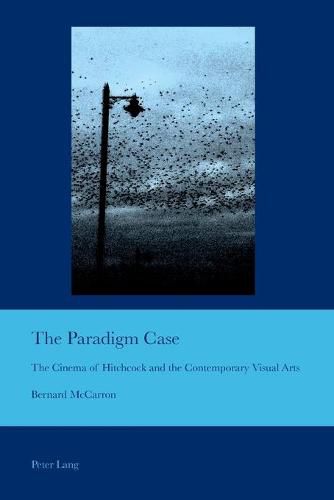Readings Newsletter
Become a Readings Member to make your shopping experience even easier.
Sign in or sign up for free!
You’re not far away from qualifying for FREE standard shipping within Australia
You’ve qualified for FREE standard shipping within Australia
The cart is loading…






This title is printed to order. This book may have been self-published. If so, we cannot guarantee the quality of the content. In the main most books will have gone through the editing process however some may not. We therefore suggest that you be aware of this before ordering this book. If in doubt check either the author or publisher’s details as we are unable to accept any returns unless they are faulty. Please contact us if you have any questions.
With the migration of cinema into the art gallery, artists have been turning, with remarkable regularity and ingenuity, to Alfred Hitchcock-related images, sequences and iconography. The world of Hitchcock’s cinema - a classical cinema of formal unities and narrative coherence - represents more than the spectre of a supposedly dead art form: it transcends its own filmic and institutional contexts, becoming an important audio-visual lexicon of desire, loss, mystery and suspense.
Through a detailed study of the Hitchcock-related work of artist-filmmakers Matthias Muller and Christoph Girardet, Johan Grimonprez, Pierre Huyghe, Douglas Gordon and Atom Egoyan, this book facilitates a dialogue between the creative appropriation of Hitchcock’s films and the cinematic practices that increasingly inform the wider field of the contemporary visual arts. Each chapter is structured around a consideration of how the artwork in question has reconfigured or ‘remade’ key Hitchcockian expressive elements and motifs - in particular, the relationship between mise en scene and the mechanics of suspense, time, memory, history and death. In a career that extended across silent and sound eras as well as the British, European and Hollywood industries, Hitchcock’s film oeuvre can be seen as a history of the cinema itself. As the work of these contemporary artist-filmmakers shows, it was also a history of the future, a paradigm case par excellence.
$9.00 standard shipping within Australia
FREE standard shipping within Australia for orders over $100.00
Express & International shipping calculated at checkout
This title is printed to order. This book may have been self-published. If so, we cannot guarantee the quality of the content. In the main most books will have gone through the editing process however some may not. We therefore suggest that you be aware of this before ordering this book. If in doubt check either the author or publisher’s details as we are unable to accept any returns unless they are faulty. Please contact us if you have any questions.
With the migration of cinema into the art gallery, artists have been turning, with remarkable regularity and ingenuity, to Alfred Hitchcock-related images, sequences and iconography. The world of Hitchcock’s cinema - a classical cinema of formal unities and narrative coherence - represents more than the spectre of a supposedly dead art form: it transcends its own filmic and institutional contexts, becoming an important audio-visual lexicon of desire, loss, mystery and suspense.
Through a detailed study of the Hitchcock-related work of artist-filmmakers Matthias Muller and Christoph Girardet, Johan Grimonprez, Pierre Huyghe, Douglas Gordon and Atom Egoyan, this book facilitates a dialogue between the creative appropriation of Hitchcock’s films and the cinematic practices that increasingly inform the wider field of the contemporary visual arts. Each chapter is structured around a consideration of how the artwork in question has reconfigured or ‘remade’ key Hitchcockian expressive elements and motifs - in particular, the relationship between mise en scene and the mechanics of suspense, time, memory, history and death. In a career that extended across silent and sound eras as well as the British, European and Hollywood industries, Hitchcock’s film oeuvre can be seen as a history of the cinema itself. As the work of these contemporary artist-filmmakers shows, it was also a history of the future, a paradigm case par excellence.